The Skin I Live In
7.6 /10 1 Votes
Director Pedro Almodovar Country Spain | 7.6/10 IMDb Genre Thriller Duration Language Spanish | |||||||||||||||||||||||||||||||||
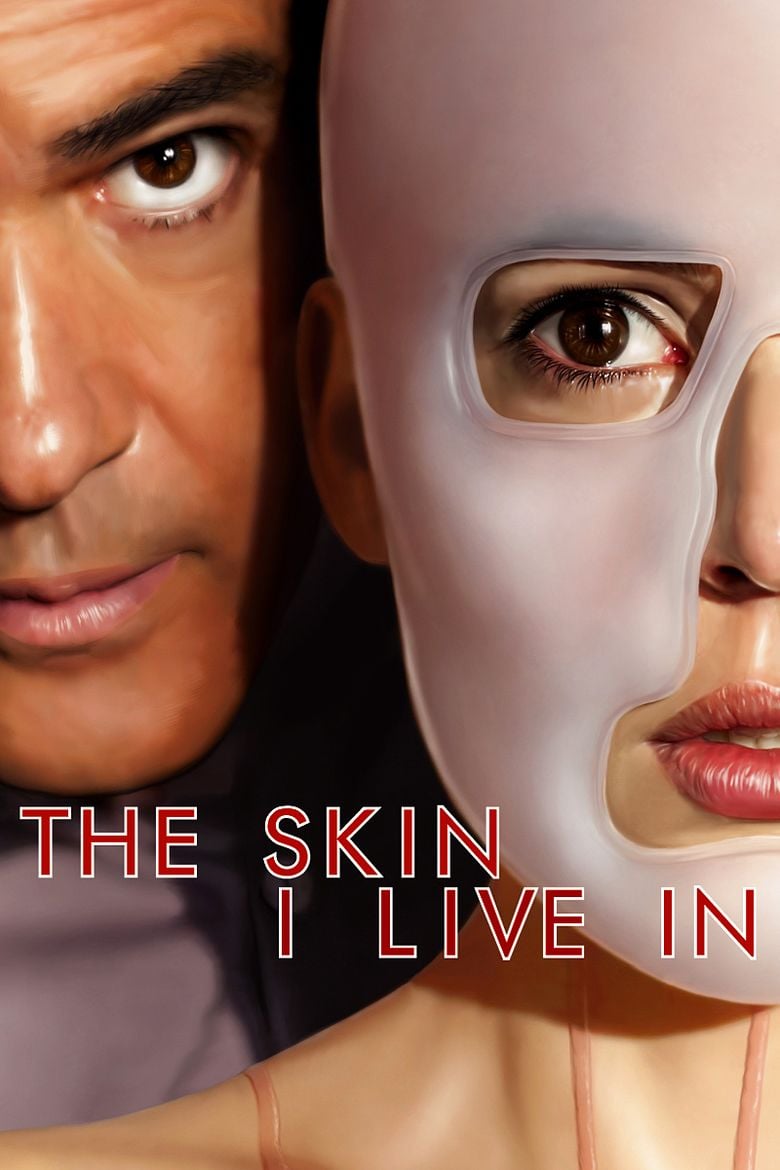 | ||||||||||||||||||||||||||||||||||
Release date 19 May 2011 (2011-05-19) (Cannes)2 September 2011 (2011-09-02) (Spain) Screenplay Pedro Almodovar, Agustin Almodovar Cast (Doctor Robert Ledgard), (Vera Cruz), (Marilia), (Vicente), Roberto Álamo (Zeca), (Fulgencio)Similar movies Face/Off , Hellbound: Hellraiser II , The Voyeur , Frontier(s) , The To Do List , The Case of the Scorpion's Tail | ||||||||||||||||||||||||||||||||||
The skin i live in trailer 2011 official
The Skin I Live In (Spanish: La piel que habito) is a 2011 Spanish psychological thriller film written and directed by Pedro Almodóvar, starring Antonio Banderas, Elena Anaya, Marisa Paredes, Jan Cornet, and Roberto Álamo. The Skin I Live In is based on Thierry Jonquet's novel Mygale, first published in French and then in English under the title Tarantula.
Contents
- The skin i live in trailer 2011 official
- The skin i live in 2011 movie trailer hd nyff
- Plot
- Production
- Release
- Critical reception
- Accolades
- The skin i live in 2 movie clip i m yours 2011 hd
- References
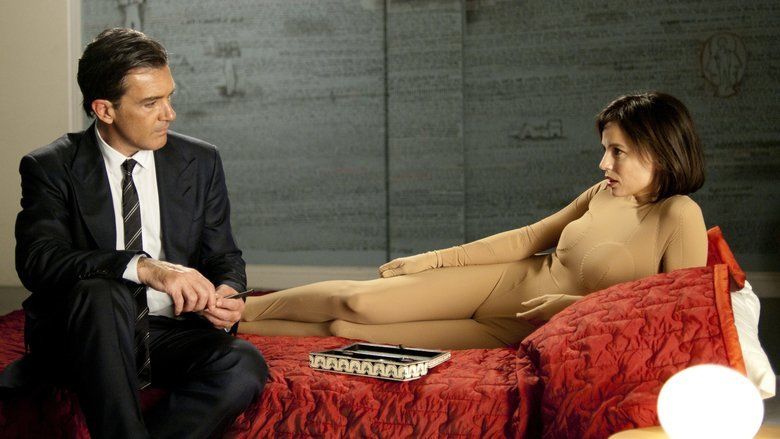
Almodóvar has described the film as "a horror story without screams or frights". The film was the first collaboration in 21 years between Almodóvar and Banderas since Tie Me Up! Tie Me Down! (1990). It premiered in May 2011 in competition at the 64th Cannes Film Festival, and won Best Film Not in the English Language at the 65th BAFTA Awards. It was also nominated for the Golden Globe Award for Best Foreign Language Film and 16 Goya Awards.
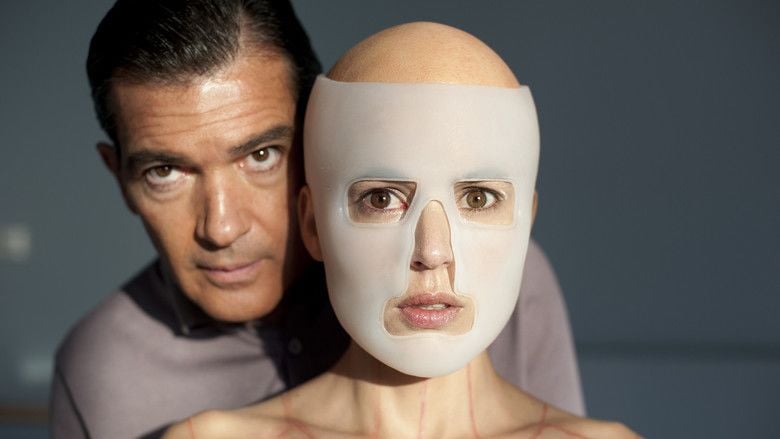
The skin i live in 2011 movie trailer hd nyff
Plot

Plastic surgeon Robert Ledgard was successful in cultivating an artificial skin resistant to burns and insect bites, which he calls "GAL", that he says he has been testing on athymic mice. He presents his results in a medical symposium but when he privately discloses he has also conducted illegal transgenic experiments on humans, he is forbidden to continue with his research.
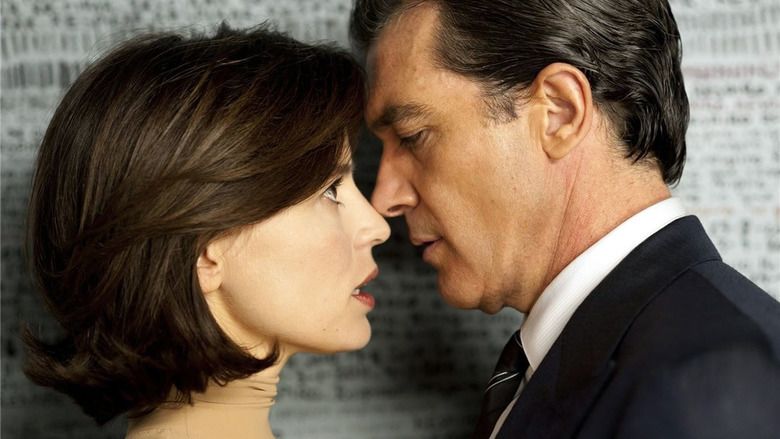
On his secluded estate, Ledgard is keeping a young woman named Vera captive, with the help of one of his servants, Marilia. Due to the suspension of his official experiments, Robert asks Marilia to dismiss the other servants.
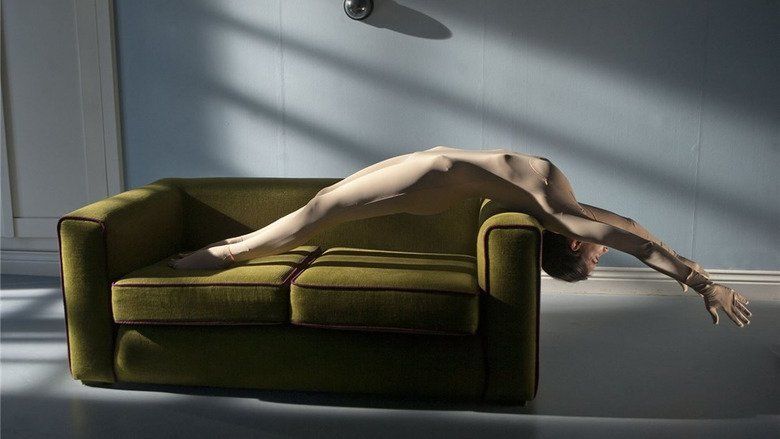
While Robert is out, Marilia's son Zeca, having committed a robbery, arrives and asks his mother to hide him for a few days. He sees Vera on Ledgard's security camera screens and demands to see her in person. When Marilia refuses to let him stay after she invites him in, he binds and gags her and then rapes Vera. Robert arrives and kills Zeca.
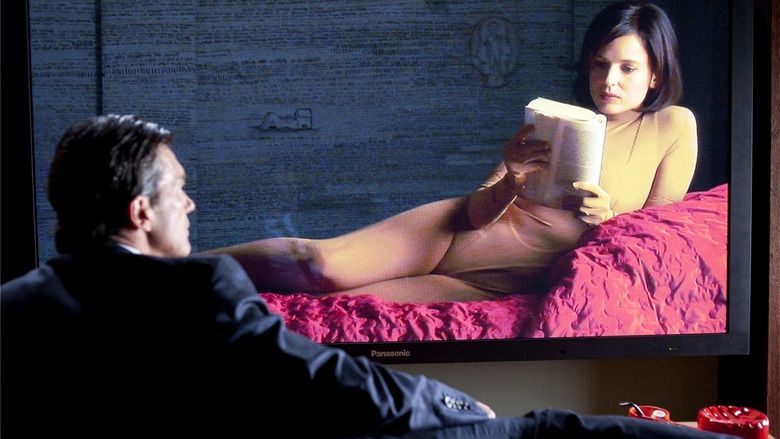
While Robert disposes of Zeca’s body, Marilia tells Vera that she is the mother of both Zeca and Robert by different men, a fact she has not shared with them. Robert was adopted by Marilia’s employers but was ultimately raised by her. Zeca later left to live in the streets and smuggle drugs, while Robert went to medical school and married a woman named Gal. When Zeca came back years later, he and Gal ran off together. They were involved in a terrible car crash in which Gal was badly burnt. Thereafter she lived in total darkness without any mirrors. One day, while hearing her daughter Norma singing in the garden, Gal accidentally saw her own reflection in the window; traumatized by the sight, she jumped to her death.
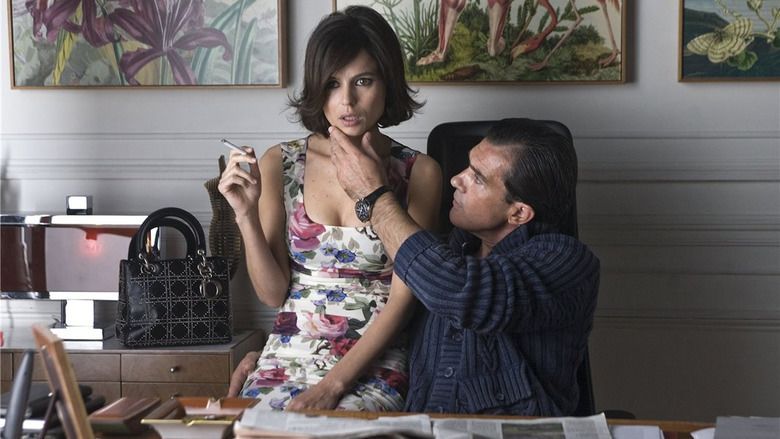
In the present, Robert returns and spends the night with Vera. During the night, he dreams of his past, specifically the night of a wedding six years earlier, where he finds Norma (his daughter) unconscious on the ground. Norma, who had been taking medication for psychosis, comes to believe that her father raped her; she develops a fear of all men and spends eight years in a mental health facility. She eventually kills herself in the same manner that her mother did.
Vera, too, dreams about the same event: Vicente, a young man who works in his mother's dress shop, crashes the wedding and meets Norma. Like others at the party, he is under the influence of drugs. He walks with Norma into the garden. Norma begins to take off some of her clothes, stating she would be naked all the time if she could. Vicente kisses her and compliments her. While they are lying down with Vicente on top of her, she suddenly starts repeating "no, no, no" and begins screaming. She bites his hand. Surprised, he slaps her, knocking her unconscious. He flees the scene, confused and nervous, just before Robert arrives.
Robert tracks down Vicente, kidnaps him, and subjects him to sex reassignment surgery. Over a period of six years, Robert physically transforms Vicente into a replica of his late wife, and calls him Vera. During this period of time, Vicente struggles to keep himself sane and cling to the core of his true identity.
After an absence of four years, Marilia returns to work in Robert’s house to look after Vera (Vicente). Vera reveals to Marilia that he has been held captive for the last six years.
Back in the present, Robert's new relationship with Vera dismays Marilia, who does not trust Vera. Fulgencio, one of Robert's colleagues, reads a news story about the missing Vicente and recognizes him as one of their sex change patients. He accuses Robert of falsifying Vicente's consent and of experimenting on him. Vera arrives to support Robert, asserting his willing participation. During the night, Robert and Vera try to have sex, but Vera tells him that he is still sore from being raped. Ostensibly going downstairs to find lubricant, he retrieves Robert's gun and kills Robert and Marilia.
Freed from captivity and the need to play along with Robert's whims, Vicente (Vera) returns to his mother's dress shop for the first time since being kidnapped. He tearfully tells his lesbian ex-colleague Cristina (whom Vicente had loved six years prior) of his kidnapping, forced sex change, and the murders. Then, as his mother enters the room, Vicente quietly reveals his identity to her in the final line of the movie -- "I am Vicente."
Production
Pedro Almodóvar read Thierry Jonquet's Tarantula about ten years before the film premiered. He described what attracted him in the novel as "the magnitude of Doctor Ledgard's vendetta". This became the core of the adaptation, which over time moved further and further from the original plot of the novel. Almodóvar was inspired by Georges Franju's Eyes Without a Face and the thriller films of Fritz Lang when he wrote the screenplay.
The director announced the project in 2002, when he envisioned Antonio Banderas and Penélope Cruz in the film's two leading roles, but eventually cast Banderas and Elena Anaya. The Skin I Live In was the first film Almodóvar and Banderas made together in 21 years, after having been regular collaborators in the 1980s. The film was produced through El Deseo for a budget of €10 million.
Principal photography began 23 August 2010 and ended almost four months later. Filming locations included Santiago de Compostela, Madrid, and a country house outside Toledo.
Release
The film premiered on 19 May 2011 in competition at the 2011 Cannes Film Festival. Due to developments in the industry of film distribution, El Deseo decided to abandon their previous release strategy for Almodóvar's works. The director's films had in the past usually been released in Spanish theatres in the spring and internationally during the last quarter of the year. The Skin I Live In was released worldwide in the autumn. The British release was 26 August 2011 through 20th Century Fox. In Spain it premiered on 2 September 2011. The film was released in the United States on 14 October the same year in a limited run through Sony Pictures Classics following its American premiere at the 49th New York Film Festival on 12 October 2011.
Critical reception
In May 2011, Kirk Honeycutt, writing for The Hollywood Reporter, said "Along with such usual Almodóvar obsessions as betrayal, anxiety, loneliness, sexual identity, and death, the Spanish director has added a science-fiction element that verges on horror. But like many lab experiments, this melodramatic hybrid makes for an unstable fusion. Only someone as talented as Almodóvar could have mixed such elements without blowing up an entire movie." Honeycutt continued: "The film's design, costumes and music, especially Alberto Iglesias' music, present a lushly beautiful setting, which is nonetheless a prison and house of horror. Almodóvar pumps his movie full of deadly earnestness and heady emotions." David Gritten notes Almodóvar "reaches out tentatively into unexplored genre territory—horror...Yet despite squirm-worthy moments ... the promise of horror gives way to Almodóvar's broader, familiar preoccupations: identity, blood ties, disguises and genetic traits." According to Gritten, "A list of the story's various elements—date rape, murder, secrets, lies, mystery parents, gender ambiguity, unbreakable emotional bonds—confirms The Skin I Live In as essentially a melodrama. Yet Almodóvar's story-telling is nowhere near as shrill as it once was: as a mature artist, he has refined his skills to a point where these soap-opera tropes assimilate smoothly into a complex whole....Typically for Almodóvar, it all looks ravishing, thanks to production designer Antxon Gómez and cinematographer José Luis Alcaine. All three men have the gift of investing mundane objects with a unique sheen; here even surgical instruments, about to be used malevolently, assume a dreamy, otherworldly quality. The Skin I Live In is the work of a master near the top of his game."
Upon its UK premiere, Peter Bradshaw gave it (four of five stars), calling it "fantastically twisted" and "a truly macabre suspense thriller"—"Banderas is a wonderfully charismatic leading man; Almodóvar has found in him what Hitchcock found in Cary Grant. He is stylish, debonair, but with a chilling touch of determination and menace."
In an October 2011 New York Times Critics' Pick review, Manohla Dargis called the film "an existential mystery, a melodramatic thriller, a medical horror film or just a polymorphous extravaganza"; according to Dargis:
It takes time to get a handle on the story (and even then, your grip may not be secure), though it's instantly clear that something is jumping beneath the surface here, threatening to burst forth. Vera's plight and the temporal shifts help create an air of unease and barely controlled chaos, an unsettling vibe that becomes spooky when Ledgard puts on a white lab coat and begins doing strange things with blood....There are times in The Skin I Live In when it feels as if the whole thing will fly into pieces, as complication is piled onto complication, and new characters and intrigues are introduced amid horror, melodrama and slapstick.... [Yet] Mr. Almodóvar's control remains virtuosic and the film hangs together completely, secured by Vera and Ledgard and a relationship that's a Pandora's box from which identity, gender, sex and desire spring.
Dana Stevens noted it was Almodóvar's "first attempt to blend elements of the horror genre with the high-camp, gender-bending melodrama that's become his stock in trade"; she called it "visually lush and thematically ambitious", a film that "unfolds with a clinical chill we're unaccustomed to feeling in this director's films. The Skin I Live In is a math problem, not a poem. Still, what an elegant proof it is." Stevens called it a "meditation on profound themes: memory, grief, violence, degradation, and survival", a "multigenerational melodrama [that] slowly fuse[s] into a coherent (if wackily improbable) whole", offering "aesthetic and intellectual gratification, but little in the way of emotional punch."
In a report for The Buenos Aires Herald, film critic Julio Nakamurakare wrote that: "The long name-dropping as flaunted by film critics also includes references to Herzog. Under which pretense, I'm not quite sure. They may all be right, but the truth remains that The Skin I Live In, slow-moving and with a wayward, confusing narrative in spite of the explanatory intertitles for hare-brained viewers like this scribe, is an insatisfactory product on most counts, and Almodóvar's admirable body of work may go to his own detriment, for it is inevitably compared with The Skin I Live In. Indeed, we have all learned to expect a head-twisting shocker from every move by Almodóvar, as in the weirdly fascinating Talk to Her, organically and genetically repulsive at first but oddly compulsive on further scrutiny. This is clearly not the case with The Skin I Live In. This time round, Almodóvar gets lost in the maze he himself has built in the image of Dr. Robert Ledgard, a calque of the sweetly, achingly, neurotically obsessed Ricky played by Banderas in Tie Me Up, Tie Me Down! (1992), in which the game of opposites functioned much more efficiently than in the shallow, disappointingly superficial The Skin I Live In. As can be surmised, The Skin I Live In fails to run smoothly, and, in spite of all the hype, there is no 'Almodóvar plunges into new philosophical depths' here."
Accolades
Anaya received the Goya Award for Best Actress. The film won Best Film Not in the English Language at the 65th British Academy Film Awards; in previous years Almodóvar won that same award for his 1999 film All About My Mother and his 2002 film Talk to Her.
The skin i live in 2 movie clip i m yours 2011 hd
References
The Skin I Live In WikipediaThe Skin I Live In IMDb The Skin I Live In themoviedb.org
